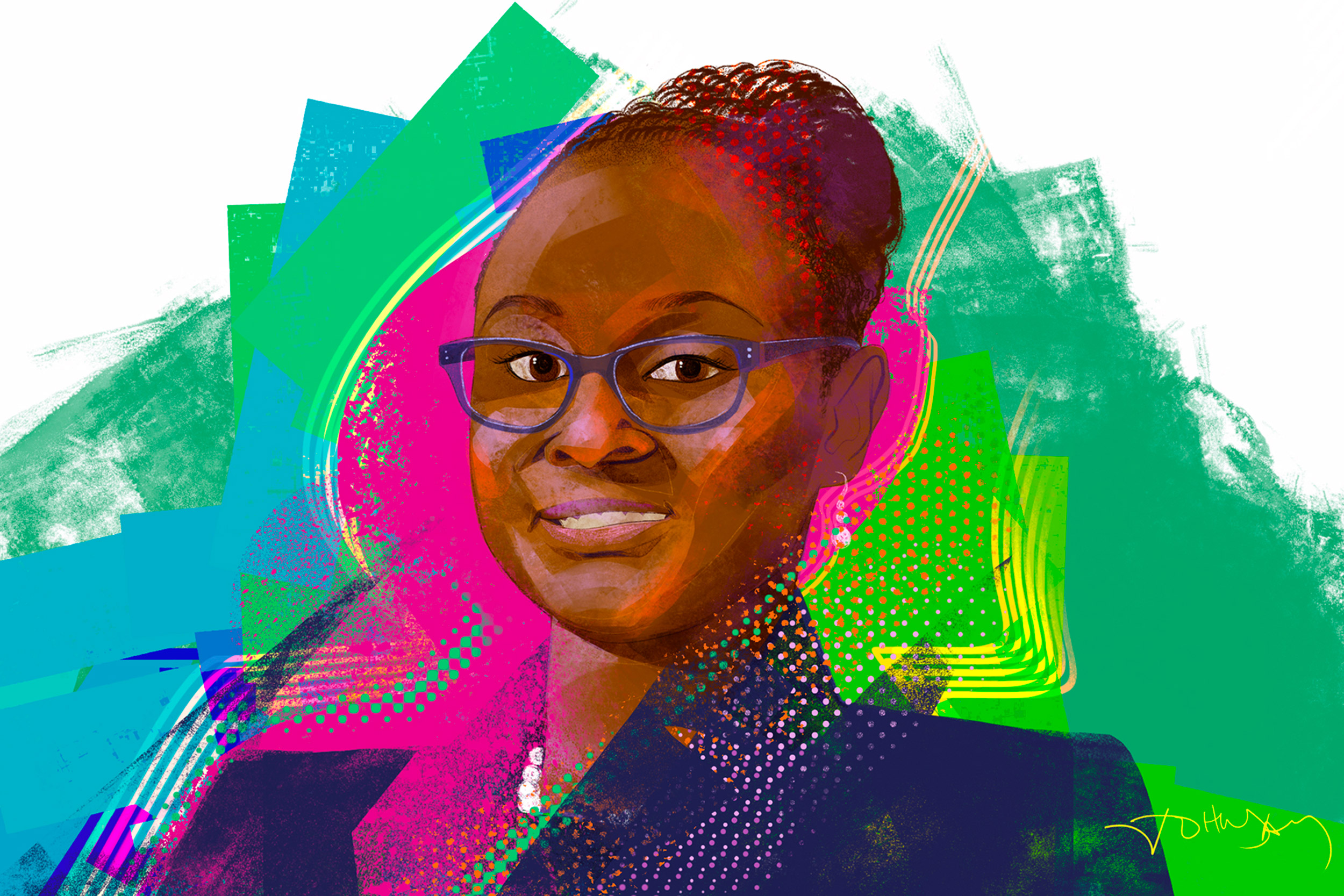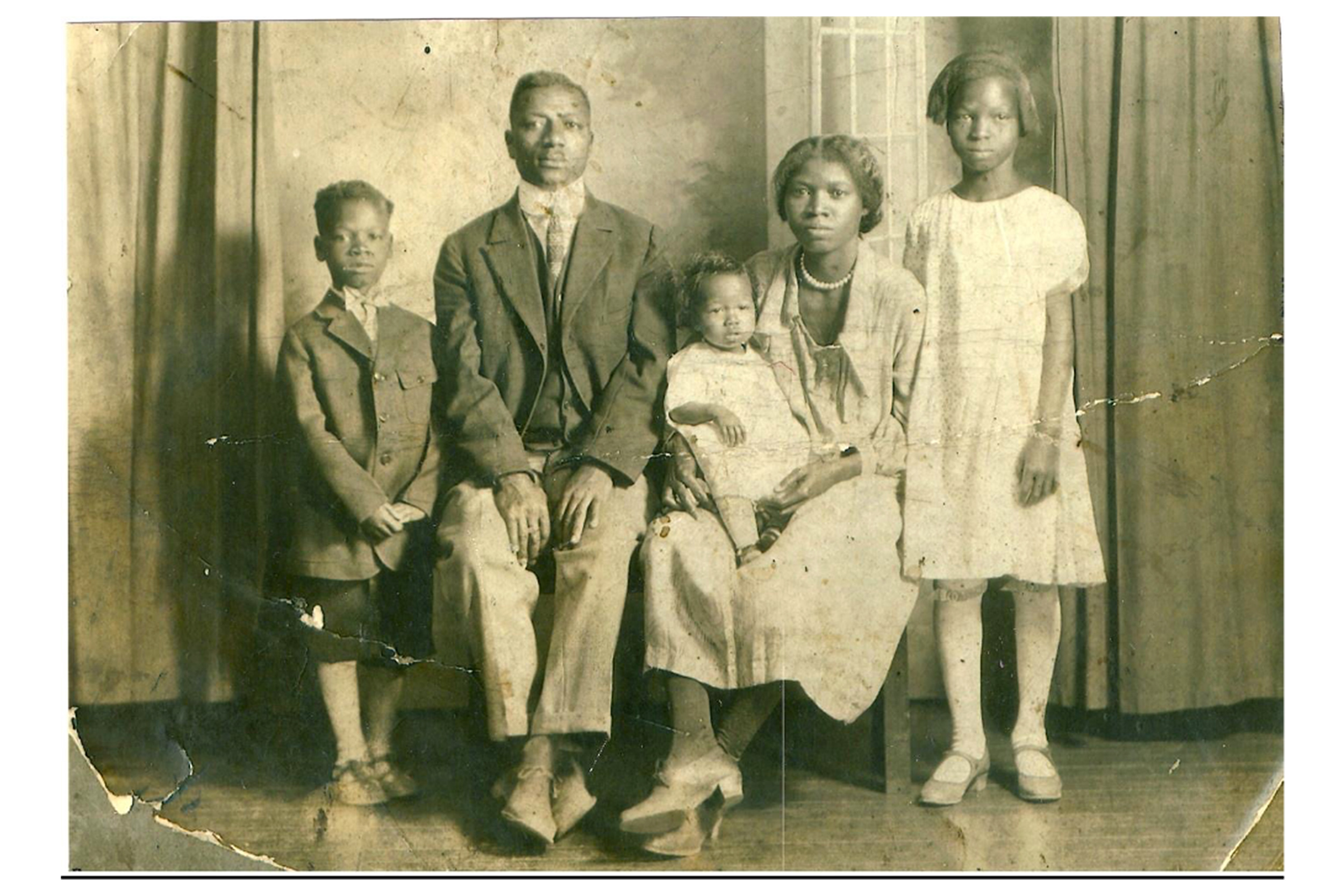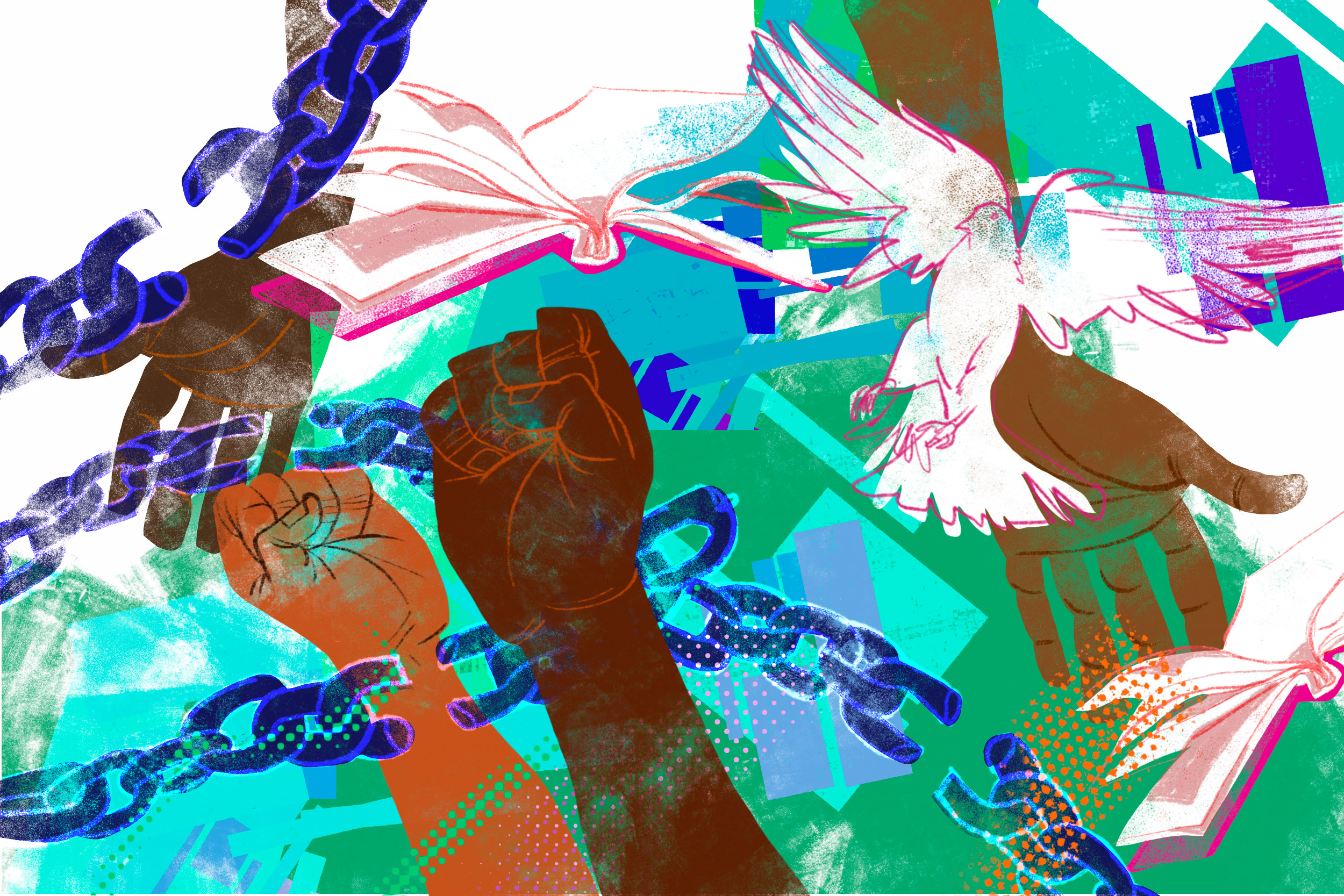
Illustrations © John Jay Cabuay
Why do we need critical race theory? Here is my family’s story
Tauheedah Baker-Jones recounts a history of slavery, Klan violence, and Jim Crow

In My View
Tauheedah Baker-Jones, Ed.L.D. ’21
I live in Atlanta, about 130 miles north of where my paternal ancestors were enslaved.
Washington County, Georgia, is the birthplace of my oldest known relatives born into slavery: Charles Sheppard (b. 1817), his daughter, Saddie Sheppard-Harris (b. 1855), and her husband, Charles Harris (b. 1849).
Saddie and her father were slaves of the Sheppard family — the founders of Washington County. The Sheppards remain a prominent family in the state of Georgia, and our familial histories are forever intertwined.
Washington County is also the birthplace of my great-great-grandfather Lodrick Harris Sr. (b. 1895). Lodrick was the son of Saddie and Charles Harris and the father of my great-grandfather Lodrick Harris Jr.
Lodrick Sr. and his wife, Pearl Dixon-Harris, left Georgia with their children in 1919.
It is said that the couple contemplated moving to Atlanta, where other family members resided. But this was a time following the 1906 Atlanta race riot and restrictive Jim Crow legislation, including the 1910 ordinances requiring segregation on Atlanta streetcars and in city restaurants. As a result, Lodrick and Pearl settled in Marion, West Virginia, believing they could provide a better future for their children there.

My great-great-grandfather, Lodrick Harris Sr., and my great-great-grandmother, Pearl Dixon-Harris, along with my great-grandfather Lodrick Jr. and his sisters, Lucille (standing) and Marguerite (seated on Pearl’s lap).
Courtesy of Tauheedah Baker-Jones
Lodrick opened a small shop in Marion. He also became an outspoken advocate for civil rights. Because of this, on March 10, 1935, the Ku Klux Klan set fire to his family’s home.
Lodrick was not present. But Pearl, Lodrick Jr., then 16, and his younger siblings Ulysses, 4, and Marguerite, 7, were.
To save her children, Pearl told young Lodrick to climb out of the back window. She handed him his younger siblings and told him to flee to the home of their older sister, Lucille.
Pearl was killed in the fire.
When Lodrick Sr. returned home, he found his wife dead. In his grief, he escaped in the middle of the night with his youngest children to Ohio, where much of my paternal family reside today.
They left everything behind — including my great-great grandmother Pearl. The only remembrance of her is a family photo, which Lucille gave my great-grandfather the night they fled West Virginia.
My family’s story provides a proof point of the intersection between race, law, and our collective experience. This fact exists while some within our political ecosystem would rather romanticize our past and shelter our students from this reality.
Their actions threaten our democracy and ill-prepare our students for the interconnected world they’re inheriting. They also stifle the collective healing we need to move toward a more hopeful and promising future.
The recent efforts to ban critical race theory (CRT) from the K-12 curriculum demonstrate a misunderstanding of what CRT is and why honest, brave, and respectful discussions about race and racism are important.

CRT examines how the concept of race has shaped our laws and the experiences of all people. In evaluating the validity of CRT, consider:
- American chattel slavery was a de jure institution built on race.
- At the end of slavery, emancipation was undermined by the passage of Jim Crow laws, which discriminated on the basis of race.
Legally sanctioned bigotry and race-based violence shaped my family’s lived experiences and life choices.
The interconnection between race, law, and experience can be seen throughout our history and remain present today. Ironically, even the bans on teaching CRT provide proof of the theory’s validity.
CRT is primarily taught in higher education, and I have not seen it taught in any school district in which I’ve worked. However, as an educator, I promote teaching history that allows our children to see the beauty and blind spots of our democracy.
A more perfect union is what the founders of our nation wanted. To achieve this, we must teach in a way that calls attention to the long-established systems that reinforce racism and uphold racial inequity.
A pedagogy grounded in racial justice benefits all students because it allows them to:
- Become critical thinkers who can empathize with people different from themselves.
- Compete in the global society as individuals who are knowledgeable about the lives, experiences, and cultures of others.
- Actively respond to and engage with racism and other issues that challenge our democracy.
As Rocio Inclan, senior director of the National Education Association’s Center for Social Justice, states, “Racial justice is not an add-on to the curriculum. It is the way that you teach when you center on the students and when you center on the truth. [The end result] is a system where the vision and promise of public education is actualized.”
Exactly 100 years separate when my great-grandfather Lodrick Jr. left Georgia and when I returned to support the Atlanta Public Schools in breaking historical patterns of inequity that have resulted in too few children succeeding. My family’s history is intimately connected with the educational realities that I am grappling with today.
As educators, we are charged with creating engaged citizens who uphold our democratic and pluralistic ideals. Through our classroom praxis, we create citizens who understand our motto of E pluribus unum and who value liberty and justice for all.
Therefore, if we want to create a more perfect union, we must start in the classroom, and we must indeed teach to change the world.
Tauheedah Baker-Jones, Ed.L.D. ’21, is the Chief Equity and Social Justice Officer, Atlanta Public Schools.




